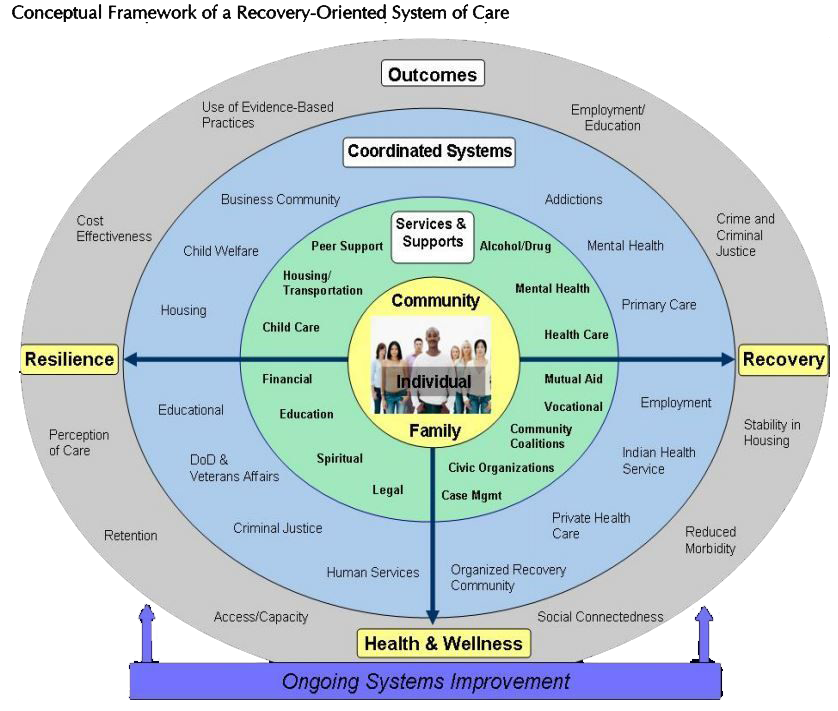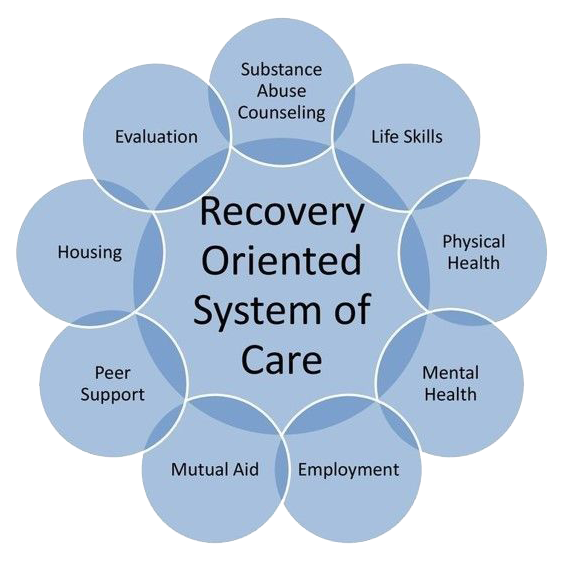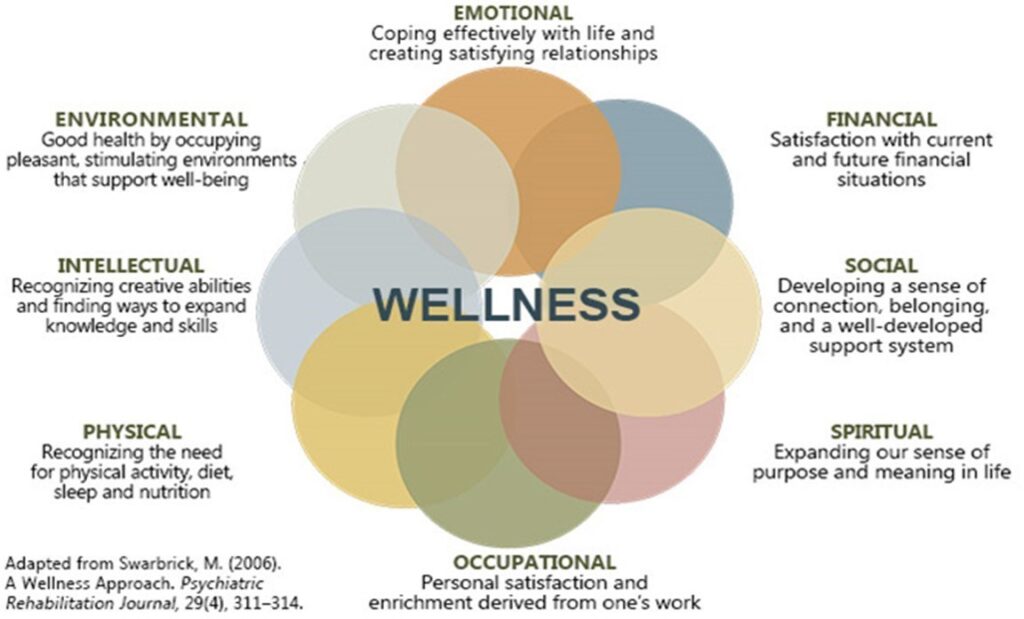The Recovery-Oriented System of Care (ROSC) sets up a supportive framework or “system of care” with resources to address a wide range of substance use issues within communities.
ROSC
CORE VALUES OF A WELL-DESIGNED ROSC
- Assures that recovery-oriented strategies are integral to all systems
- Offers equal opportunity for holistic wellness
- Embraces cultural diversity
- Acknowledges the role that spirituality can play in the recovery process
- Requires data-informed decisions
- Uses language that is not stigmatizing
- Acknowledges the importance of catering to children’s recovery needs
- Collaborates with external agencies and service systems
- Prioritizes recovery in all phases of addiction services
- Is trauma-informed
- Is developed, implemented, managed, monitored, and evaluated in partnership with individuals in recovery, their families and advocates

CENTRAL FOCUS OF A ROSC
The central focus of a ROSC is to create an infrastructure or “system of care” with the resources to effectively address the full range of substance use disorders within communities. Within this framework, substance use disorder professionals partner with mental health and primary care professionals to provide the full continuum of care, including prevention, early intervention, treatment, continues care and recovery. Emphasizing person-centered services, a ROSC allows individuals to select the resources and support that best suit their needs. Furthermore, with a commitment to accessibility, inclusivity, and ease of navigation, a ROSC ensures that individuals and families have ample options to make informed decisions about their care.
Traditionally, recovery-oriented services were viewed as long-term recovery-related activities following formal substance use disorder treatment. However, within a ROSC, these approaches are integrated into the entire continuum of care. Substance use disorder is preventable but, if left untreated, can escalate into chronic conditions. A ROSC embraces the belief that there are various pathways to recovery. From traditional treatments like peer recovery coaching to alternative therapies such as acupuncture and art therapy, recovery-oriented activities cater to diverse needs. Additional support services such as employment assistance, childcare, care management, and housing support further empower individuals and families in achieving and sustaining recovery. By offering a comprehensive network of services, a ROSC addresses the full spectrum of substance use disorders, from harmful use to chronic conditions. This approach strengthens communities through education and prevention initiatives, which raise awareness, combat stigma, and provide early intervention for those at risk.
THE WELLBRIETY MOVEMENT
“Suppose you have 100 acres full of sick trees who want to get well. If each sick tree leaves the forest to find wellness and then returns to the forest, they get sick again from the infection of the rest of the trees. The Elders taught us that to treat the sick trees you must treat the whole forest – you must create a healing forest. If not, the trees will just keep getting sick again.” — Don Coyhis

Don Coyhis, a leader of the Native American Wellbriety Movement, has describes the concept of a Healing Forest. This type of reinfection often occurs when clients return from residential treatment or incarceration to communities with a high risk of relapse. The concept of the Healing Forest challenges us to focus on the entire community as the recovery center. For this reason, MCRSP has established a Statewide Recovery-Oriented Systems of Care (ROSC) in Missouri. Through MCRSP and its 5 regional ROSC affiliates, we are creating Healing Forests that mobilize entire communities to promote and support recovery.
Each regional ROSC collaborates with key stakeholders to develop their local coalitions. Each coalition consists of recovery support service providers, treatment providers, families, faith-based organizations, other social service organizations, individuals in long-term recovery, justice-involved individuals, probation and parole, law enforcement agencies, hospitals, school personnel, employers, and concerned citizens. These regional coalitions coordinate Recovery Month celebrations, sponsor overdose awareness events, conduct trainings, and hold monthly meetings. Additionally, they offer recovery support resources for families and have expanded and diversified the number of peer-based recovery support groups, offering individuals seeking recovery a wider array of options.



